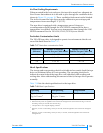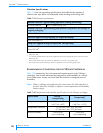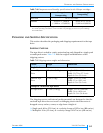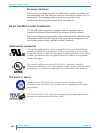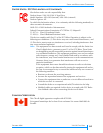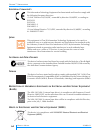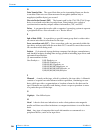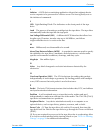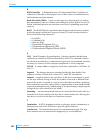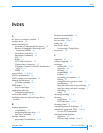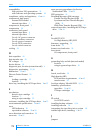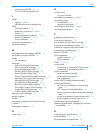
OCTOBER 2006 VXA-320 TAPE DRIVE
67
GLOSSARY
I
Initiator A SCSI device containing application clients that originate device
service requests to be processed in a device server. The host typically acts as
the initiator of commands.
L
LED Light Emitting Diode. The indicators on the front panel of the tape
drive.
Load The process of inserting a cartridge into the tape drive. The tape drive
automatically loads the tape into the tape path.
Low Voltage Differential (LVD) A differential SCSI interface that allows bus
lengths up to 12 meters, transfer rates up to 160 MB/sec., and allows
single-ended devices to co-exist on the bus.
M
msec Millisecond; one-thousandth of a second.
Mean Time Between Failures (MTBF) A quantitative measure used to specify
the reliability of a tape drive’s mechanics and electronics as a whole under
specific environmental conditions, cleanings, and duty cycle.
Megabyte One million bytes.
N
Noise Any kind of magnetic or electric interference detected by the
electronics.
O
OverScan Operation (OSO) The VXA technique for reading data packets
independently of track shape or geometry. By reading packets with multiple
scans, OSO ensures that each packet is read at least once.
P
Packet The basic VXA format structure that includes data, ECC, and address
and synchronization information.
Partition A self-contained area on a tape that can be written and read
independently to make more efficient use of the media. The VXA-320 (VXA-3)
tape drive accommodates two partitions.
Peripheral Device Any device attached externally to a computer as an
optional device, such as tape drives, printers, scanners, and so forth.
Power Cycle (1) Turn the tape drive off, wait for 10 seconds, then turn the
tape drive back on. Wait for the tape drive to go through its Power-on Self-test
(POST).
(2) If you are required to power cycle the tape drive due to overheating, allow
it to cool for several minutes before turning it back on (see “LED 4 is Flashing
Orange” on page 26 for additional information).



